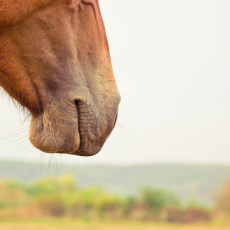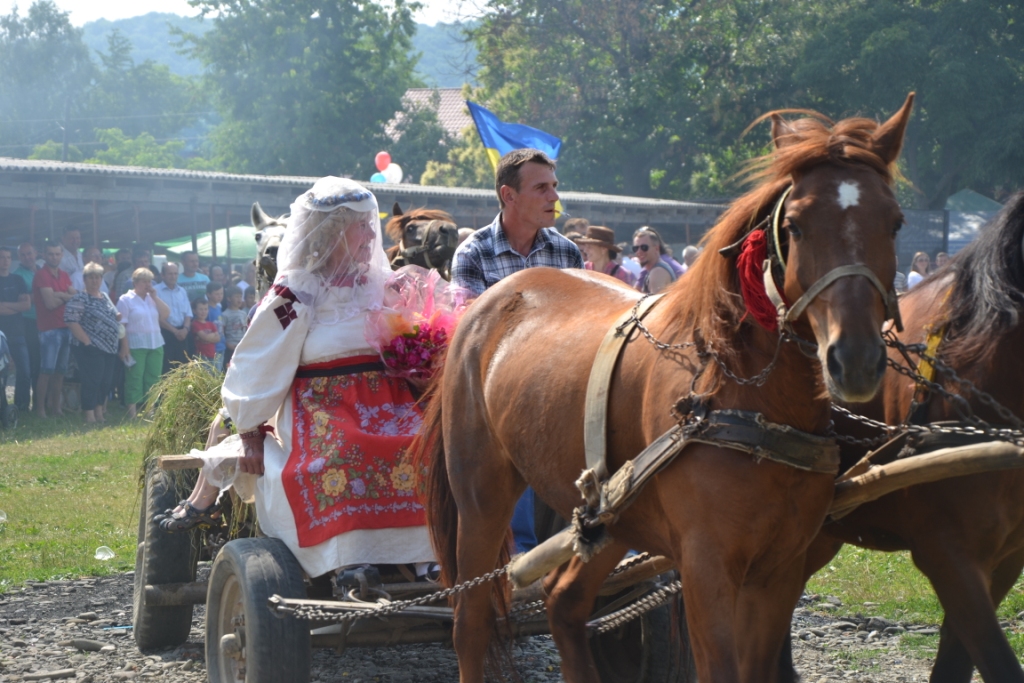
The Hucul Horse
The skeletal findings in old-germanic graves are showing that the domesticated Nordic horse was at the end of antiquity, as the “gall-horse (Equus celticus), spread by the Gall’scolonization, and after that by the German’s, not only to the northern but also to the central Europe; it is therefore very plausible that his most southern descendants are the Hucul horses, whose home is in the Carpathian mountains around Kirly Baba and on the northern slopes of the Carpathian mountains around Kolomyje. The name Hucul was given to him after his breeders, the Huculs, who were settled around Jasnina in the Eastern Carpathian Mountains.
 Stallion Gral, born 1949 in Lucina, Rumania, sire Goral V, Stallion Gral, born 1949 in Lucina, Rumania, sire Goral V,dam 223 Ouszor 11The heads of two typical Hucul mares, in front the Kertag type (roman nose) in back the Tarpan type (dished face)  |
The Hucul is a genuine mountain horse, smaller size 125 to 140 cm in the withers. He is long, wide, deep, with slightly sloped hindquarters on strong limbs; head wide at the jaws, fairly brachycephalic, often dished (pike) from the profile, with thick bushy mane, or the head is straight, sometimes even slightly roman nosed with longer and less slimmer face part, hence there are recognized two types of Huculs, the brachycephalic Tarpan type and the dolichocephalic Kertag type (besides the intermediate shapes). The older stallions grow on the neck fat ridge similar as other Nordic horses. This horse is grown on high mountains meadows (pastures), hardy bred in poor food provisions. According to Prawochenski, it has been written about Hucul as the mountain horse already in 1606 by the author of hippological writings “Hippica” Dorohostajsky. The carefulness of the Hucul in climbing steep mountain trains is unique, lifting his front legs high to step over obstacles in front of him. He is commonly used as the pack-horse (soumar) in the mountains, as a riding horse as well as a strong draft horse. The experiences showed, that a pair of Huculs often managed heavier load than a pair of heavy (coldbloods) horses. The Austrian stud-farm management decided to establish, as an addition to the Radovec stud, a farm Lucina, which is high in the Carpathian mountains, as a pure Hucul stud farm and placed there typical Hucul mares and with them less typical strong stallions from the Goral and Hroby lineage. After the fall of the Austrian empire in 1918 a great part of this herd ended up in Rumania, Poland and Czechoslovakia, which created for them a stud farm in Turich near Uzhgorod. Later on this herd was moved to Topolčianky in today’s Slovakia, where was established a new line of stallions Gurgul after a stallion bought in the Carpathian Mountains near Kolomyje. |
There were expressed various opinions about the origins of the Hucul breed. The Viennese school of Adamtz held the Huculs as degenerated Arabians in poor living conditions. Since the Hucul country was for a long time under the Turks and Tartars (Mongols), the Huculs were believed to be the descendants (remnants) of the Turkish and Mongolian horses. The exact chronological analysis of the Hucul was never done.
According to various comparisons of the Huculs’ skulls with uncovered relicts in the old-Germanic graves as well as with recent skulls of Oriental, Mongolian and Nordic horses (Gudbrandals) it is fair to conclude that the Hucul is more likely of the Nordic origins at which also points his entire physiology, biology, his habitus and even his common buckskin or dun color with a back stripe and “tiger” (rings) striped limbs.
On the festival of Hucul horses 2015


 Magyar
Magyar Nederlands
Nederlands



 A cikk olvasásához, katt a képre.
A cikk olvasásához, katt a képre.